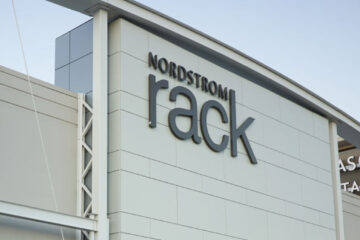While you can debate the overall impart of retail theft on America’s retailers it’s clear that small-time shoplifting has been on the rise. That’s clearly related to the growth of self-checkout.
Not having a person handle their items seem to encourage consumers to miss scanning an item. In some cases, of course, that’s an honest mistake or a machine error, but the theft numbers jump up when people use self-checkout.
Related: Popular grocery chain closes over 220 stores, saves nearly 175
“While 95.9% of consumers have used self-checkout machines, statistics show theft increases by up to 65% at self-checkout compared to a traditional checker,” according to a Capital One study. “Over 20 million Americans have stolen from a self-checkout kiosk. 15% of consumers admit to using self-checkout to steal; 44% of them plan to re-offend.”
💰💸 Don’t miss the move: SIGN UP for TheStreet’s FREE Daily newsletter 💰💸
The study uncovered a number of other facts when it comes to self-checkout and theft.
20.1 million Americans have stolen from a self-checkout kiosk; 8.85 million plan to do it again.69% of consumers say it’s easier to steal from a self-checkout kiosk than from a cashier.33% of self-checkout shoplifters have been caught.21% of self-checkout thefts are accidental (i.e., the shopper fails to notice when an item does not scan).
Target, however, as well as some regional grocery chains, believe they have figured out how to use self-checkout to both maximize efficiency and minimize theft.
Self-checkout has led to increased theft.
Image source: Getty Images
Target, grocery chains limit items
Target (TGT) , along with multiple regional grocery chains, made a decision to test limiting the amount of items in self-checkout. That’s something the retailer explained in a blog post.
“In March 2024, we debuted Express Self-Checkout with limits of 10 items or fewer at most of our nearly 2,000 stores nationwide to give guests an easy and convenient option for a quick trip — with our traditional, staffed lanes available for when their cart is full. About a year later, Express Self-Checkout has been a greShopat success and addition to our offer, with both our guests and team members seeing the benefits,” Target shared.
The retail giant has not publicly commented on whether this change has cut theft, but it seems quite happy with its choice.
More Retail:
Walmart, Target, Costco make major 2025 announcementFormerly bankrupt retailer makes painful decision to close more storesTop investor takes firm stance on troubled retail brand
“Total transaction times have improved nearly 8% across both our self-checkout stations and our traditional, staffed lanes. Guests taking advantage of both options are reporting better checkout experiences overall in terms of wait times and interactions with our team members,” the retailer reported.
ShopRite, Schnucks, and Giant Foods have also added limits (20 items) to their self-checkout lanes.
Experts have mixed opinions on Target’s change
Noted retail voice and Managing Director of GlobalData’s retail division Neil Saunders does not support Target’s policy.
“I never agreed with the limit. Ten items is not a lot – especially if buying essential items – and imposing it reduces customer choice of how to pay. That said, it is not routinely enforced, so can be ignored,” he wrote on RetailWire.
Target, he shared has multiple issues impacting checkout.
“The problem with manned checkouts at Target is that, in many stores, there are not enough open at times. As for transaction times being down: maybe that’s because people are buying fewer things these days and foot traffic at Target is down,” he added.
Craig Sundstrom believes that the change has cut down theft.
“Presumably most people use self-check because it’s faster – or at least they think it is – so yes, this certainly makes sense; and it’s equally obvious that it’s easier to monitor someone who only checks few things than one who’s there for 20 minutes. Is any of this a surprise to anyone? So if they stop here fine; if it becomes an excuse to understaff, then not much will have been accomplished,” he posted.
Brad Halverson, who has an extensive background in grocery chain management, believes there are more inviting ways to have item limits.
“It can and should work without sounding like a scolding parent. For our stores, signage stated ’10 Items, More or Less’ to remove the stress of exact item counting, and to reduce customer conflicts. The main idea was encourage customers with small amounts of groceries toward these areas to get in, get out faster,” he shared.
Related: Chapter 11 bankruptcy forces Mexican chain to close 77 locations
Gary Sankary, a 50-year retail veteran, sees it as a balance for retailers.
“Balancing margin and labor costs with customer service and great experiences. Although retailers are loath to admit it, check lanes are already a source of shrink, and self-checkout lanes amplify the issue. Limiting the size of baskets is one way to address the shrink issue. Keep in mind that limiting items and not expanding cashier-staffed lanes, is a fast track to frustrated customers,” he wrote.


